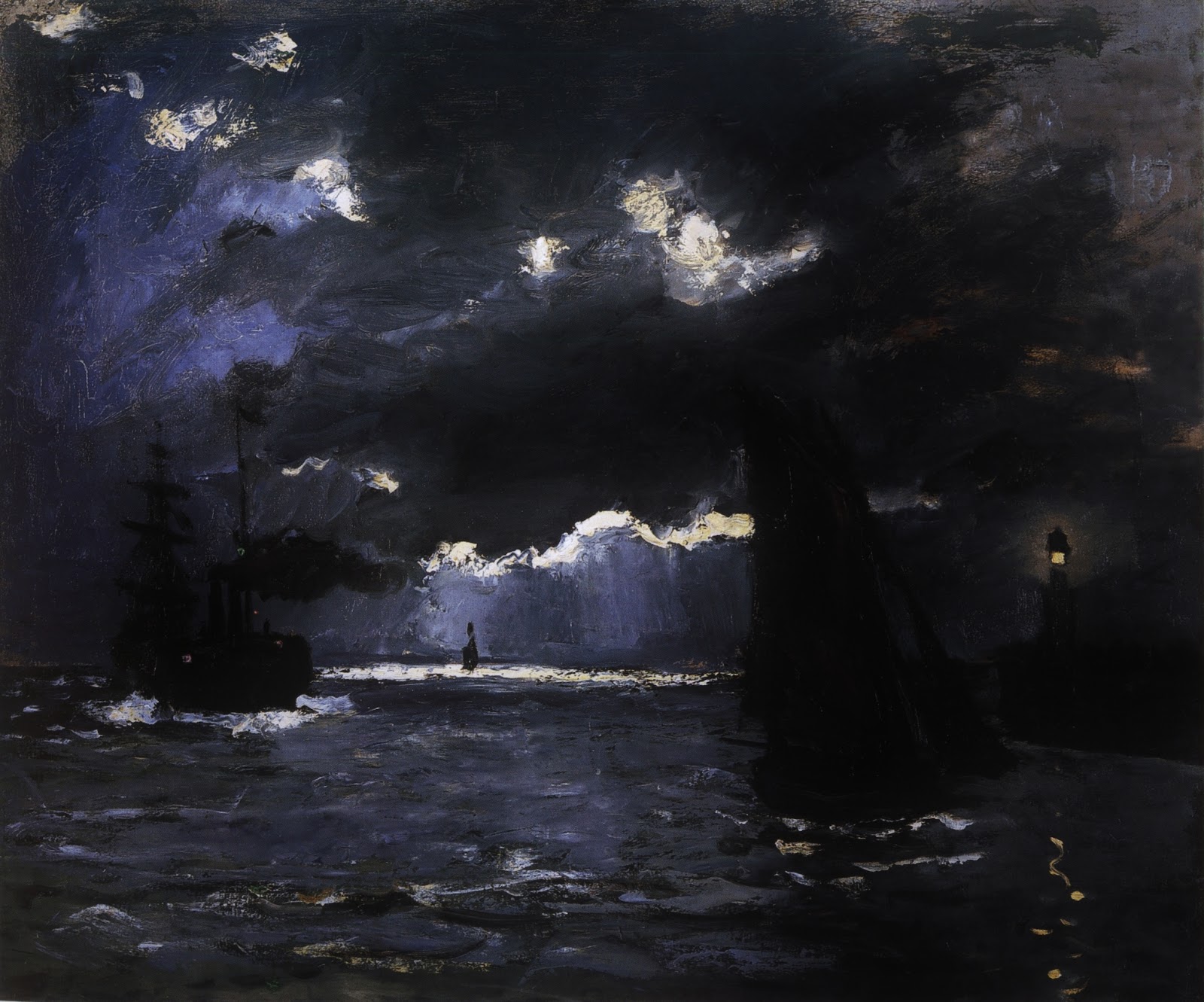I've a whole bunch of Monet
paintings we can look at (but doesn't everybody). From early on in his career he focused on
light as the quality of utmost importance in his works. Only through light, after all, is vision
possible, and art is about vision. This
early work of the artist, of the Mouth of the Seine at Honfleur, was painted
before Impression: Sunrise, yet it still reveals Monet's attention to light.
It is better to see the actual
painting (it's in Pasadena, California), since here the pixilation has
distorted the colors and brightness of the paint. The original work more brilliantly displays
the delicate effect that the sunlight had on the marine landscape on this
cloudy day. And look at that little boat
on the right which is being hit directly by a ray of sunshine. It stands out, almost luminously, as the
point to which our eye is led (with the help of the line of seagulls
above). Not the overcast sky, nor the
shadowed, seaside town, nor the unsanitary-looking water itself, but this tiny
boat in the distance is our focal point in this work of art, not because it is
in the center of the painting but because it is what gets the most light.
Similarly, this painting, produced
the following year, envisions the effects of light at night. Here the artist has grappled between the
artificial beam of a distant lighthouse and the rays of moonlight poking in
through the dark clouds overhead. The
effect is a painting constituted of almost entirely shadows, broken only by a
few gleaming streaks of moonlit radiance.
Once again, this painting does look rather splotchy and unkempt, but
Monet paints it that way because it is how he actually saw it.


No comments:
Post a Comment